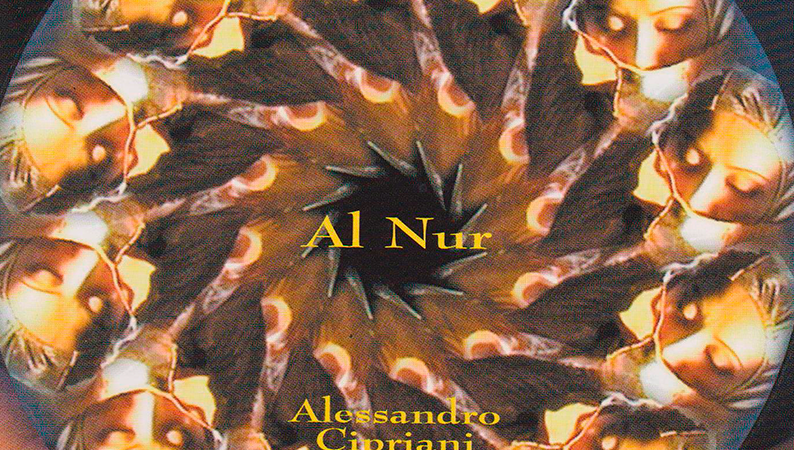SUL CD “AL NUR”

Quest’ ultimo lavoro rappresenta una vera svolta nella produzione di Alessandro CiprianI (…) La Luce (“Al Nur”) illumina questo disco dal fascino ammaliante, solare. Dal brano iniziale “Jasminb”, con la splendida voce del marocchino Nour-Eddine Fatty, alle melodie cinesi di “Into the Light”. Ma è proprio nella “Trilogia” dedicata al canto religioso che Cipriani ci stupisce e ci regala momenti di rara intensità espressiva: quasi 40 minuti divisi tra canto islamico (“Al Nur”, ancora con la voce di Fatty), canto gregoriano (“Aqua sapientiae/Angelus Domini”) e canto ebraico (“Mimaa’ makim”).
Assai azzeccati gli arrangiamenti e la strumentazione, rigorosamente tradizionale, accostata a rielaborazioni elettroniche molto personali e mai forzate, che anzi si amalgamano perfettamente con la fonte musicale originale. Affascinante è aggettivo che rende a malapena l’emozione che si prova ascoltando, e lasciandosi andare, la musica proposta. Veramente un disco da ascoltare, con mente libera e aperta.
Maurizio Petitti Musikbox (nuova serie) n.2 mar/apr 2001

Alessandro Cipriani uses cutting-edge technology to bring us closer to the music of a timeless oral tradition, including religious chant from the three Abrahamic traditions of Christianity, Islam, and Judaism. Musically and conceptually, this is an extraordinary CD, with wonderful sounds and human warmth. And as a result of Cipriani’s great sensitivity and gift for sound, the music becomes more a part of us, more a part of our contemporary language. And as the music sings to us, we feel more a part of the humanity it represents.
Joel Chadabe, dal sito dell’Electronic Music Foundation, New York
I have been listening to Cipriani’s works for five or six years and I thought I knew his music. I was completely wrong because after this new CD I can no longer recognize him. “Al Nur” is the revolution of a musical language. Why? Cipriani writes in the booklet “My latest works are a rewrite of pieces of oral traditions (more or less complex), including a trilogy on religious chant (Gregorian, Islamic, Jewish), a traditional Chinese piece, another Arabic, fragments of a piece of rock music composed without writing the music and other fragments from memory…” What does it mean? The melodic and rhythmic structures absorbed into these compositions are not simply quotations put in only for the taste of something exotic, but they signify an alive element that flourishes step by step. We can sometimes listen to polyphony that doesn’t belong to the old composition but to the new one. There is always great respect for the oral traditions; in fact the music of these civilizations has not been shattered, camouflaged and reduced to a loop for a schematic composition that nowadays we can easily hear everywhere. The melody, the rhythm, the single sound revive to create other melodies, rhythms and sounds. Cipriani puts a mosaic together and its tesserae are: time and space of music, the witchery of silence, spirituality, time/space seen through a soul. This is Cipriani’s new ways to constitute his medium.
Giuseppe Rapisarda, Computer Music Journal Volume 26 Number 3 Fall 2002 – M.I.T. Press
